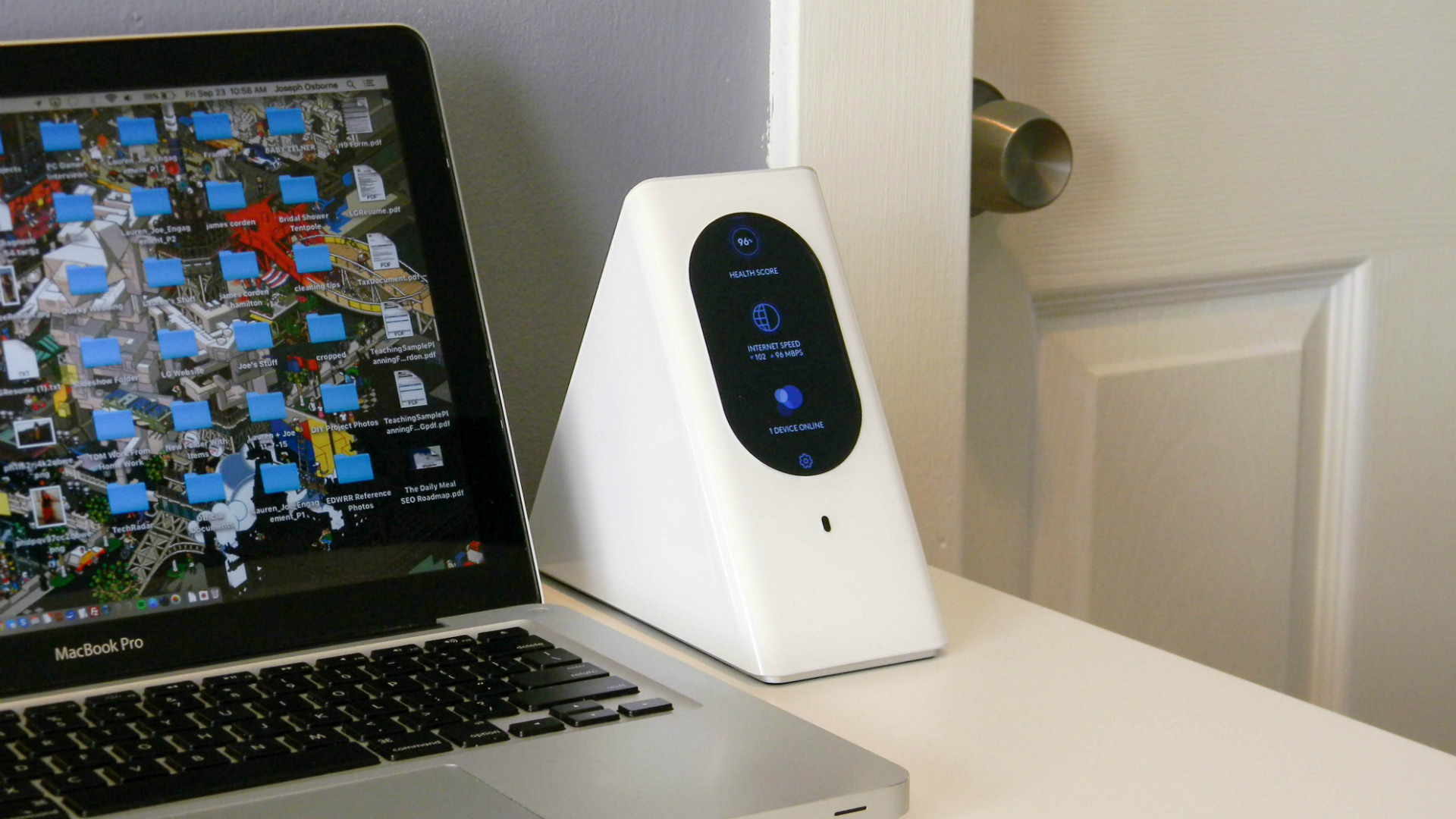TechRadar Verdict
If you're only remotely tech-savvy and want simpler, more reliable Wi-Fi with deeper controls for your myriad devices, Starry Station is well worth considering, but you might need outside help to make the best of it.
Pros
- +
Elegant, simple interface
- +
Touchscreen offers lots of information & control
- +
Steady, reliable connection
- +
Instant customer support
Cons
- -
Will require rewiring for most effectiveness in many cases
- -
Few ports
- -
Gets noticeably loud
Why you can trust TechRadar
Even for some of us that write technology reviews, configuring Wi-Fi ranges from annoying, to some sort of sorcery that we dare not meddle with, to somewhere in between. It's for that reason that this editor has admittedly used internet service provider (ISP) supplied routers for years.
Look, I just couldn't be bothered, okay? But, that was until we received the Starry Station for review.
For $299 (about £230, AU$392), the Starry Station promises to simplify Wi-Fi in your house with an interface that actually makes sense and controls that work. That is, coupled with placing your router in a place you likely never have: out in the open and central in your home.
Is Starry Station worth rewiring the internet connection in your house for? In the age of Wi-Fi mesh systems, that depends on a lot of factors, namely your level of tech savvy.
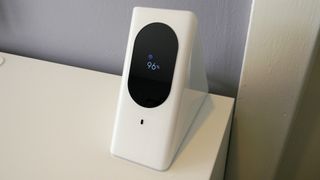
Design
The most important facet of the Station's design is that it was crafted to look such a way that wouldn't inspire users to just shove it in the closet or under a desk. With its triangular design and soft edges, coupled with a cute, rounded touchscreen, Starry largely achieves this.
Equipped with just two Ethernet ports, one of which being for the WAN connection to your modem or gateway, the device's focus here is obviously on wireless. Inside are dual-band, 4x4 MIMO 802.11ac (a/b/g/n, too) radios, and the whole thing is powered by two dual-core processors – one for the network and one the interface, respectively.
The system runs on 1.5GB of RAM and 8GB of Flash storage, to run the interface and store updates and log data, respectively, and also sports an 802.15ac radio for IoT devices.
The contrast between the "front" of the device's glossy white plastic shell and its brushed aluminum back plate with its concentric cooling vent holes – not to mention the friendly touch interface – makes it something we wouldn't feel weird putting on the entertainment center or on a hallway buffet table. And, that's good for Starry, because it's counting on customers placing the Station in open areas for the best possible signal.
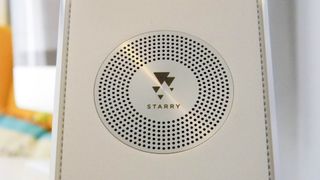
However, considering how many people must get their houses wired for internet in such a way that has allowed them to hide their ugly routers in closets, Starry's asking quite a lot of its customers. That's especially so considering that the device's fan is noticeably loud while running, something we've rarely encountered in routers before.
At any rate, we doubt that many people practically afraid of their routers exist in the same Venn diagram as those that are willing to get their house re-wired for faster Wi-Fi speed. Well, the best way to demonstrate why they might want to consider that are projected performance gains.
Performance
Honestly, the Starry Station's core strength isn't a pure throughput advantage over what your average, ISP-provided router or gateway is capable of, but rather its ease of use and overall stability.
We found that the Starry Station provided a much more stable connection during our time running both speed tests and download tests than we're used to with Verizon's supplied gateway, with far less deviation in reported figures in megabits per second (MBps).
In short, with the Station, you're going to enjoy download speeds that remain at their peak for longer with fewer dips in MBps. Steadier connection speeds affect all sorts of Internet consumption these days, too, like streaming video and online gaming.
Of course, keep in mind that your connection depends on the client's (i.e. your connected device in question) hardware as well. For instance, the janky AC network adapter in my home PC couldn't seem to get decent numbers out of the Starry Station connection, meanwhile the Surface Pro 4's AC network adapter used to conduct the below benchmarks had no trouble at all.
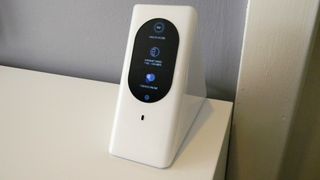
Here's how the Starry Station performed in a few standardized tests, accounting for our unique test environment:
Benchmarks
MegaPath Speed Test Plus 5GHz (Download/Upload):
- Within 5 feet/1.52 meters; no obstructions: 101.66/114.3 Mbps
- Within 13 feet/3.96 meters; three plaster walls: 97.4/68.8 Mbps
MegaPath Speed Test Plus 2.4GHz (Download/Upload):
- Within 5 feet/1.52 meters; no obstructions: 101.4/114.4 Mbps
- Within 13 feet/3.96 meters; three plaster walls: 68.4/47.3 Mbps
1.5GB Steam download 5GHz (peak speed):
- Within 5 feet/1.52 meters; no obstructions: 12.7 Mbps
- Within 13 feet/3.96 meters; three plaster walls: 12.7 Mbps
1.5GB Steam download 2.4GHz (peak speed):
- Within 5 feet/1.52 meters; no obstructions: 12.7 Mbps
- Within 13 feet/3.96 meters; three plaster walls: 9.9 Mbps
Now, let's see how these numbers compare to the stock, 802.11ac FiOS Quantum Gateway provided directly by Verizon:
MegaPath Speed Test Plus 5GHz (Download/Upload):
- Within 5 feet/1.52 meters; no obstructions: 101.7/114.5 Mbps
- Within 13 feet/3.96 meters; three plaster walls: 101.7/113.9 Mbps
MegaPath Speed Test Plus 2.4GHz (Download/Upload):
- Within 5 feet/1.52 meters; no obstructions: 92.3/85.9 Mbps
- Within 13 feet/3.96 meters; three plaster walls: 73.50/72.74 Mbps
1.5GB Steam download 5GHz (peak speed):
- Within 5 feet/1.52 meters; no obstructions: 12.7 Mbps
- Within 13 feet/3.96 meters; three plaster walls: 12.6 Mbps
1.5GB Steam download 2.4GHz (peak speed):
- Within 5 feet/1.52 meters; no obstructions: 10.9 Mbps
- Within 13 feet/3.96 meters; three plaster walls: 9.8 Mbps
The MegaPath Speed Test Plus benchmark measures how much speed the device used could access based on its current environment in relation to the router and how much throughput the ISP is actually providing. All MegaPath figures are averages of three runs for each test.
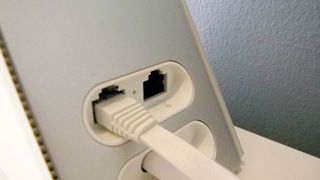
For these tests, we used a Surface Pro 4 to conduct them on battery power – a most likely usage scenario. The tests conducted within five feet were in an office setting, while those conducted within 13 feet were in our living room, one of the most popular areas for accessing Wi-Fi, separated by up to three walls from the routers.
The Starry Station, like Starry suggests, sat on top of a desk while the FiOS Gateway sat in the same desk's cabinet below, so that we could test Starry's claims calling for an unobstructed router.
As you can see above, save for within a scant few scenarios, there were largely little gains in outright throughput between the Starry Station and Verizon's stock gateway. (In fact, in some scenarios the Station actually performed worse.)
What does this mean? Well, some of the discrepancies could be due to anomalies in the internet connection being piped into the gateway to begin with. But, being largely the same results across the board, it's clear that the Station doesn't offer any enormous throughput advantage over a common competitor.
Again, said speed is also dependent upon the client device hardware being used for the test, and we're using Microsoft's latest. (Clearly, this test also proves how little of the download speed this editor is paying for is actually coming through.)
Throughout our time with Starry Station, we experienced nary a hiccup in connection quality or download speed, something we can't say for the Verizon-provided device in comparison.
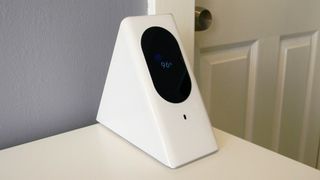
192.168.1.1 … begone!
Knowing what performance gains are or aren't on the table now, perhaps the Starry Station's killer app more than ever is its ease of use. Setting up the Station took – quite literally – five minutes.
Once you connect the Station to your modem or gateway and then to power, Starry automatically updates the device and gets the process going, restarting once or twice.
Then, straight from the 3.8-inch LCD touchscreen, you're invited to download the Starry app (which this editor personally doesn't find a ton of use for) and asked to set up your network. Right away, you create a network name and password or use one of the randomly-generated ones, and the network is broadcast on 2.4GHz and 5GHz frequencies immediately – plus an optional, additional 5GHz network.
Following that, you're immediately provided a Wi-Fi Health percentage score, which collates your ISP's provided speed, your connected devices' capability and the signal strength to each device. From there, you can test the specific speed that your ISP is providing from within the device, made possible by speed test gurus Ookla.
Swiping to the left after tapping into the percentage or the globe icon provides deeper details and even trends over time. This way, if you see that you're not getting what you're paying for, you now have the receipts to take to your ISP.
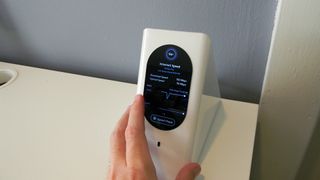
The Station even allows for parental controls down to the device level from within the router's interface, backed by a passcode. As of this writing, these are a little sparse, down to when said kids' devices can access the network.
(You can also create guest Wi-Fi networks straight from the device's touch interface.)
In an idle state, the Station displays the devices on its networks as if they're planetary bodies orbiting a star – a cute analogy. Those in red are in bad shape network-wise for whatever reason, while those in blue are doing fine. The size of the orb is dictated by how much bandwidth that device is using.
If you have an issue with your Wi-Fi, you can request a call from customer support straight from the device by leaving your number. (This might be the killer app, come to think of it.)
All in all, it's an enjoyably elegant interface that truly does make managing your router incredibly simple. You'll never look back at the days of typing "192.168.1.1" into your browser windows and trying to decipher countless numbers and acronyms – after remembering your account details, that is.

Verdict
The Starry Station is an excellently-designed, minimalistic Wi-Fi device that both makes managing your network simpler and, in some cases, more reliable. That said, I would expect more granular control over device access and bandwidth for the $299 price tag.
That's especially considering that most folks are going to have their internet rewired in order for the Station to work at its highest potential. Both are quite the friction points for people that are already averse enough to "routers".
(A router with super-easy access to customer service may help with that.)
Still, say you're an only remotely tech-savvy parent that wants simpler, more reliable Wi-Fi for your family's ever-growing digital presence, the Starry Station could be the solution for you – with some help from your ISP's on-site support, of course.
Joe Osborne is the Senior Technology Editor at Insider Inc. His role is to leads the technology coverage team for the Business Insider Shopping team, facilitating expert reviews, comprehensive buying guides, snap deals news and more. Previously, Joe was TechRadar's US computing editor, leading reviews of everything from gaming PCs to internal components and accessories. In his spare time, Joe is a renowned Dungeons and Dragons dungeon master – and arguably the nicest man in tech.
